Businesses today demand tools that unify communication across email, text, phone, and social media. Customers expect smooth transitions between channels without repeating themselves or facing delays. AI email tools solve this by integrating platforms, automating responses, and maintaining context across conversations.
Here’s a breakdown of the top tools:
Quick Comparison
| Platform | Focus | Channels Covered | Best For | Pricing Highlights |
|---|---|---|---|---|
| Magai | Content creation | Email, social media | Marketing teams | Tiered plans based on usage |
| Mailbutler | Email productivity | Email, calendar | Small teams | Basic integrations, low cost |
| ActiveCampaign | Marketing automation | Email, SMS, social media | Marketing campaigns | Add-ons increase costs |
| GetResponse | Event-driven campaigns | Email, SMS, web push | Event marketers | Tiered pricing, free trial |
| Reply.io (Jason AI) | Sales outreach | Email, LinkedIn, phone | Sales teams | $60+/user/month |
| My AI Front Desk | Real-time support | Calls, texts, WhatsApp, email | Customer support teams | Usage-based, 200+ free minutes |
Each tool serves different needs. If you aim to improve marketing, ActiveCampaign or GetResponse may suit you. For real-time support, My AI Front Desk offers unmatched multichannel capabilities. Choose based on your business's communication priorities.
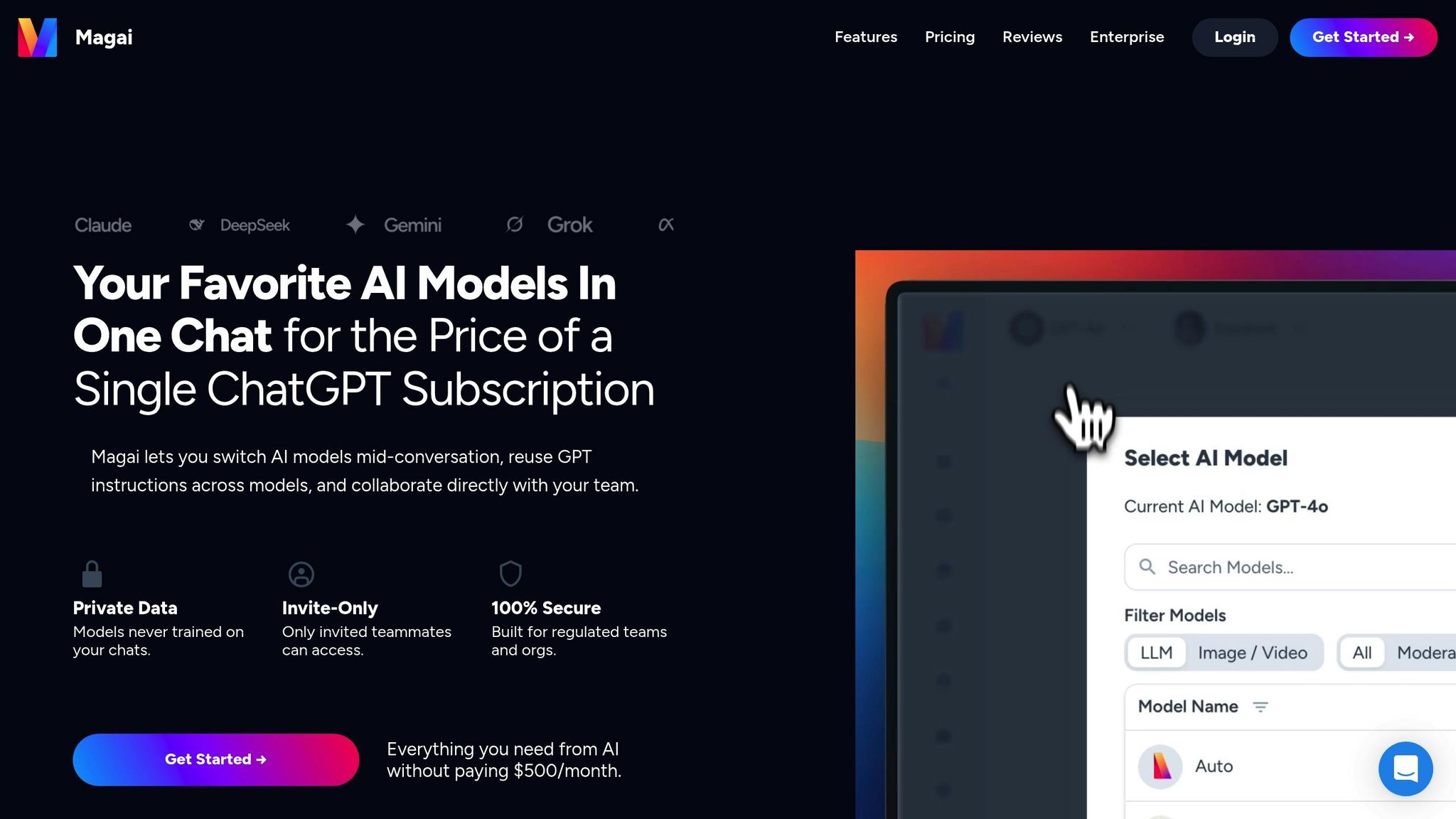
Magai is an AI workspace designed to bring multiple AI models together under one roof, making it a valuable tool for businesses aiming to simplify email automation while managing multichannel communication. By offering a unified interface, Magai enables businesses to handle a variety of communication tasks with ease, ensuring smoother operations across different channels.
The platform adopts a multichannel approach, integrating AI models like GPT-4, Claude, and Gemini. This setup allows users to switch between models depending on the specific needs of a task - whether it’s adjusting tone, context, or addressing different customer touchpoints. This adaptability is especially useful for businesses handling diverse communication scenarios.
Integration capabilities are a key focus for Magai, emphasizing workflow automation. The platform enables businesses to organize customer interactions by channel, maintain context across various platforms, and ensure email responses align seamlessly with prior conversations - whether those occurred via phone calls, live chat, or social media.
From a context management standpoint, Magai shines by preserving conversation threads across multiple AI models and channels. Teams can create dedicated workspaces tailored to specific customer segments or communication types, ensuring that email responses are informed by the entire customer journey rather than treating each message as a standalone interaction.
Magai's automation features include tools for creating templates, generating responses, and triggering workflows that connect with other platforms. Its ability to integrate multiple AI models allows businesses to fine-tune email responses based on the complexity of the task, offering both efficiency and precision.
When it comes to pricing, Magai employs a tiered subscription model. Monthly plans scale based on the number of AI model interactions and access to advanced features like team collaboration tools and enhanced integration options. This structure provides predictable costs while supporting businesses as they grow their multichannel communication efforts.
It’s worth noting that Magai prioritizes AI model orchestration over direct channel integration. While it excels at email creation and management, businesses may need additional tools or custom integrations to fully connect with existing systems like CRMs, phone systems, or live chat platforms. Altogether, Magai offers intelligent AI coordination to support seamless multichannel communication.
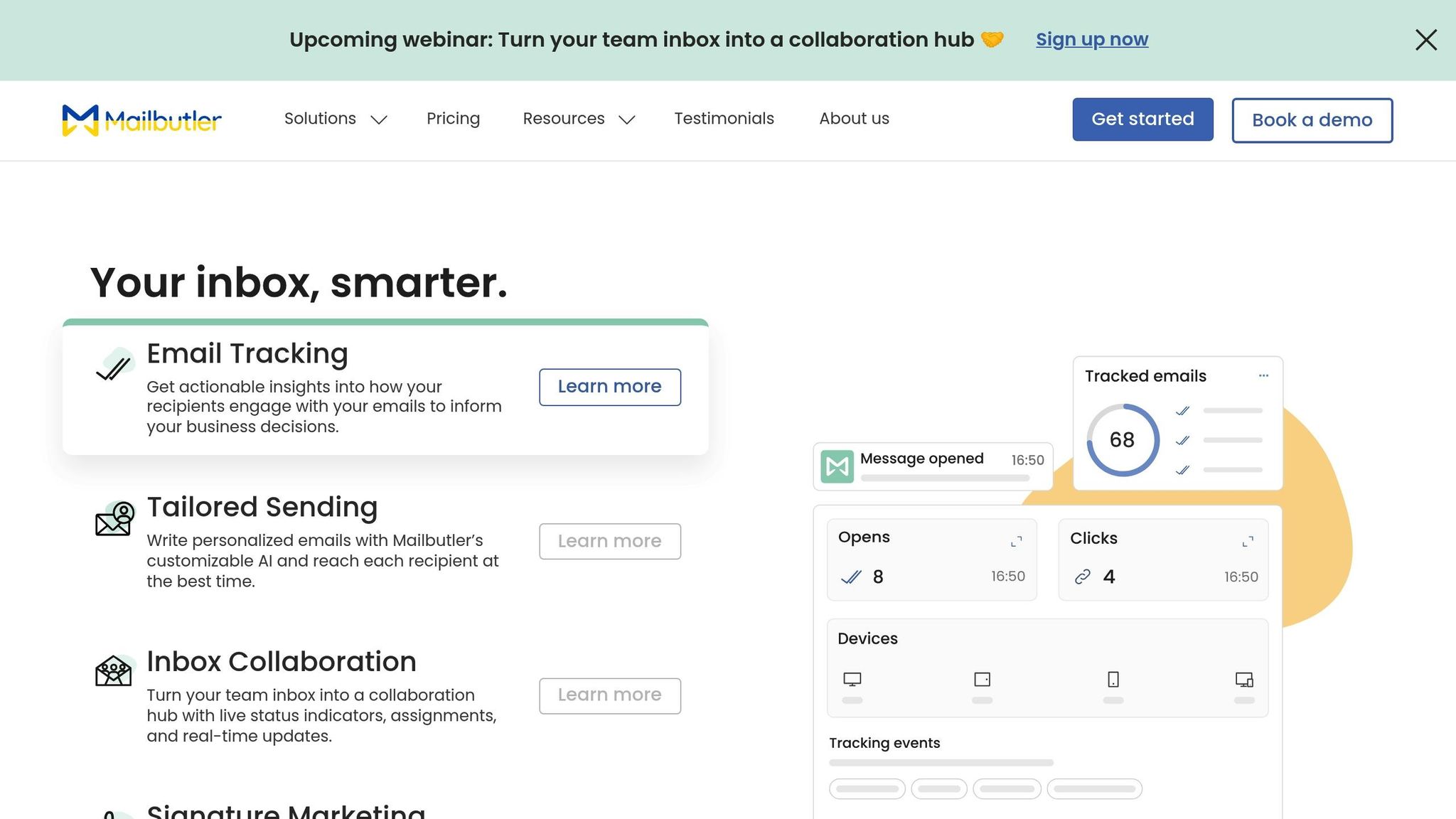
Mailbutler enhances standard email platforms by adding a suite of integrated, multichannel tools powered by APIs. It keeps the familiar email interface intact while expanding its functionality to connect with external tools. This makes it easier to manage communication across multiple channels, aligning with the growing need for unified customer interactions on various platforms.
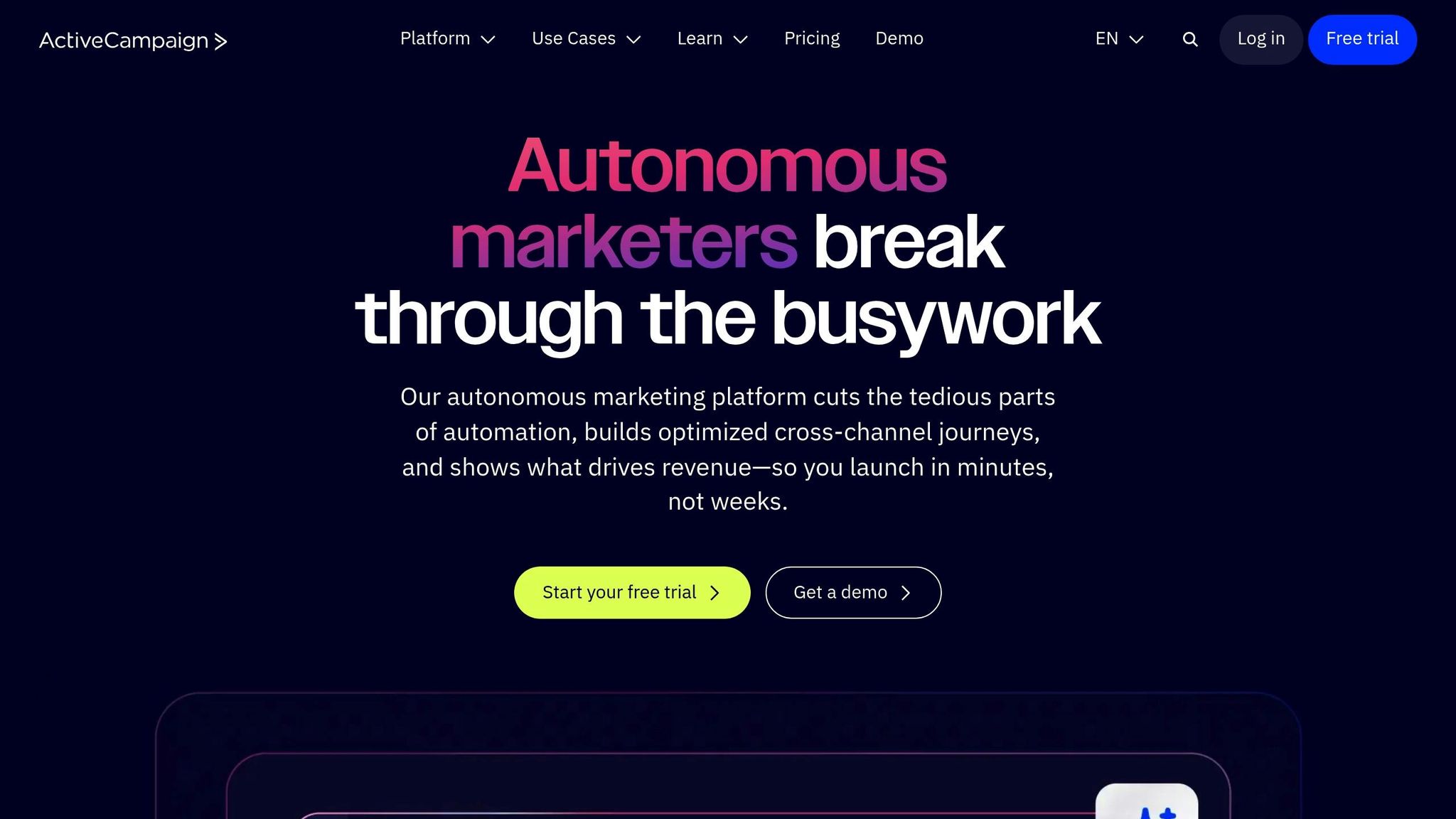
ActiveCampaign stands out by offering a modular approach to multichannel support. Instead of embedding all multichannel features directly into its core platform, it provides businesses with the flexibility to customize their communication tools through add-ons and integrations. This setup allows companies to build a strategy that fits their specific needs and budget, making it adaptable to changing communication demands.
The platform’s multichannel functionality combines built-in features with optional paid add-ons. For example, email automation is included in all plans, but features like SMS marketing, WhatsApp messaging, and advanced CRM tools require additional purchases. While this structure offers flexibility, it can also lead to higher costs as businesses expand their communication channels.
One of ActiveCampaign’s strengths is its automation capabilities, which enable users to create workflows that span multiple channels. For instance, an email campaign can trigger an SMS follow-up or a sequence that blends email nurturing with targeted text messages. However, these advanced automation features are only available with the Plus plan or higher. Additionally, the platform integrates with over 900 marketing tools and apps. This extensive ecosystem makes it easier to connect email campaigns with social media, customer service platforms, and sales tools.
Pricing can become a bit complicated for businesses aiming to establish a full multichannel setup. While basic email marketing is covered in the starter plans, achieving a comprehensive multichannel strategy requires upgrading to the Plus plan and purchasing additional add-ons, which can increase overall costs.
It’s worth noting that ActiveCampaign updated its pricing structure in January 2023 and again in June 2024, separating CRM features into standalone add-ons and renaming its plans.
For those interested in exploring the platform’s multichannel capabilities, ActiveCampaign offers a 14-day free trial. This trial includes access to Professional plan features, allowing businesses to test advanced automation tools and add-on compatibility before making a commitment.
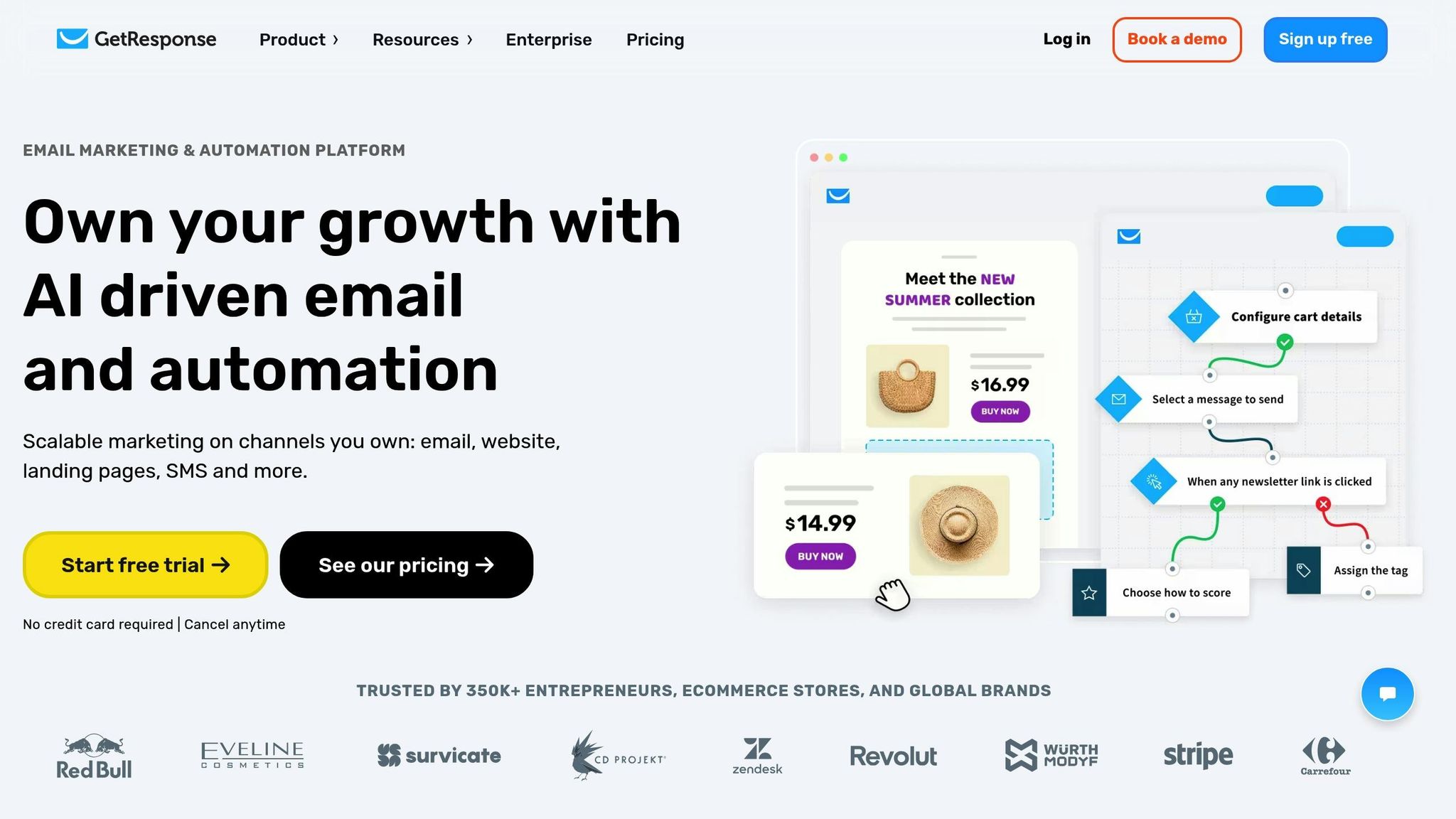
GetResponse brings together email automation, SMS marketing, and web push notifications into a single platform, making it easier to manage multiple communication channels from one place. These features are bundled into higher-tier plans, streamlining the process of creating automated, cross-channel workflows.
With its Marketing Automation feature, GetResponse lets users design workflows that connect different channels seamlessly. For example, if a customer abandons their cart, the system can trigger an email, followed by an SMS within 24 hours, and finally, a web push notification. This approach ensures consistent messaging while reaching customers through their preferred methods of communication.
One standout feature is the integration of SMS marketing, which is included in select automation plans without extra costs. Businesses can run SMS campaigns globally, sending personalized messages based on customer behavior. These messages can be embedded into email workflows, enabling more advanced customer nurturing sequences.
Web push notifications add another layer of engagement by reaching users who may not be actively browsing. These notifications are triggered by specific user behaviors tracked through the platform's analytics, offering businesses another way to connect with their audience.
When it comes to pricing, GetResponse uses a straightforward tiered structure. Plans combine email marketing, SMS, web push notifications, and automation workflows. Higher-tier plans provide advanced segmentation, enhanced automation tools, and additional support, while basic plans cater to simpler needs. However, advanced CRM and e-commerce integrations are mostly limited to the higher-tier plans.
For those interested in exploring the platform, GetResponse offers a 30-day free trial across all its plans. This trial period gives businesses the opportunity to test its multichannel features and automation tools before committing to a subscription. Overall, the platform's features are designed to meet the demand for seamless, multichannel customer engagement.
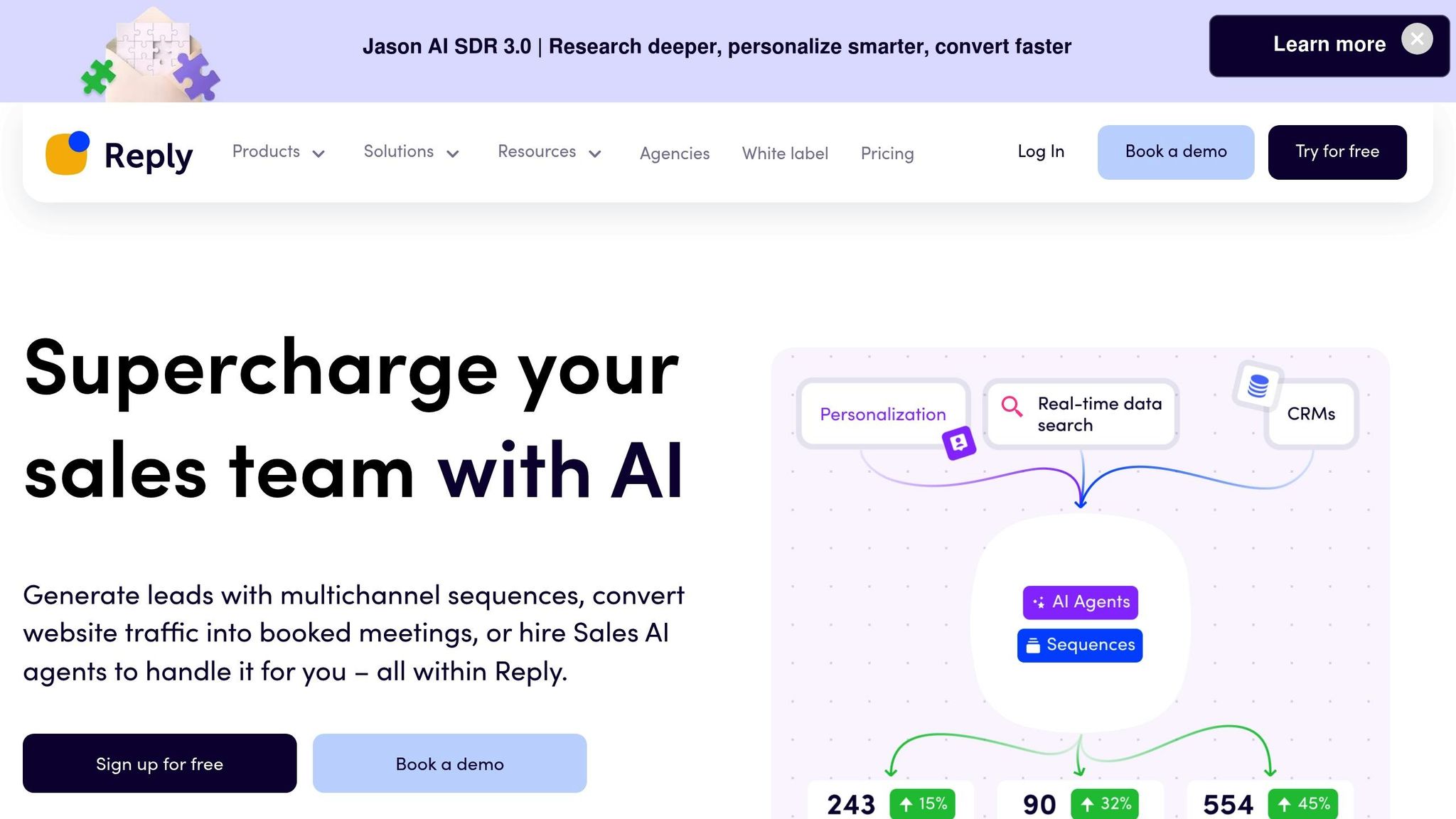
Reply.io takes multichannel sales outreach to the next level by integrating email sequences with LinkedIn outreach and phone calls, all managed through its Jason AI assistant. Designed specifically for sales teams, this platform helps coordinate outreach across multiple channels while keeping conversations personalized and consistent.
With its sequence automation, Reply.io combines email, LinkedIn, and phone communication into seamless campaigns. For example, a sales rep can set up a workflow that starts with an email, followed by a LinkedIn connection request, then a phone call, and wraps up with a follow-up email. Jason AI ensures these touchpoints are well-coordinated, maintaining the flow and context of conversations across channels. If a prospect replies to an email, the system updates the sequence automatically - adjusting LinkedIn messages or scheduling phone calls based on the new interaction. This means sales reps can easily pick up where they left off, whether on LinkedIn, email, or a phone call, ensuring a smooth and cohesive experience for the prospect.
The platform shines in its LinkedIn integration. Users can automate tasks like sending connection requests, InMail messages, and even visiting profiles. It also tracks LinkedIn engagement metrics alongside email opens and clicks, giving sales teams a clear picture of how prospects are interacting across all channels.
Reply.io doesn’t stop at LinkedIn - it also enhances phone interactions. Jason AI can schedule calls based on email engagement, automatically dial prospects at the best times, and even leave pre-recorded voicemails if a call goes unanswered. Outcomes from these calls are tracked, and the AI adjusts follow-up emails or LinkedIn messages accordingly, ensuring every interaction is informed by the previous one.
Pricing starts at $60 per user per month for basic multichannel features, with higher-tier plans offering advanced AI tools and unlimited sequences for up to $200+ per user per month. While this may seem pricier than standard email marketing tools, the inclusion of LinkedIn automation and phone integration - features often requiring separate platforms - makes it a comprehensive solution for sales teams.
Analytics and reporting are another strong suit. The platform provides insights into how different outreach strategies perform. For instance, teams can compare the success rates of email-first versus LinkedIn-first sequences or see if adding phone calls improves conversions. These insights make it easier to refine multichannel strategies based on real-world results.
That said, Reply.io is primarily geared toward B2B sales outreach. It’s not designed to handle broader tasks like customer support or marketing automation, making it less suitable for teams looking to manage the entire customer lifecycle. However, for sales teams focused on outreach and lead engagement, it’s a powerful tool.
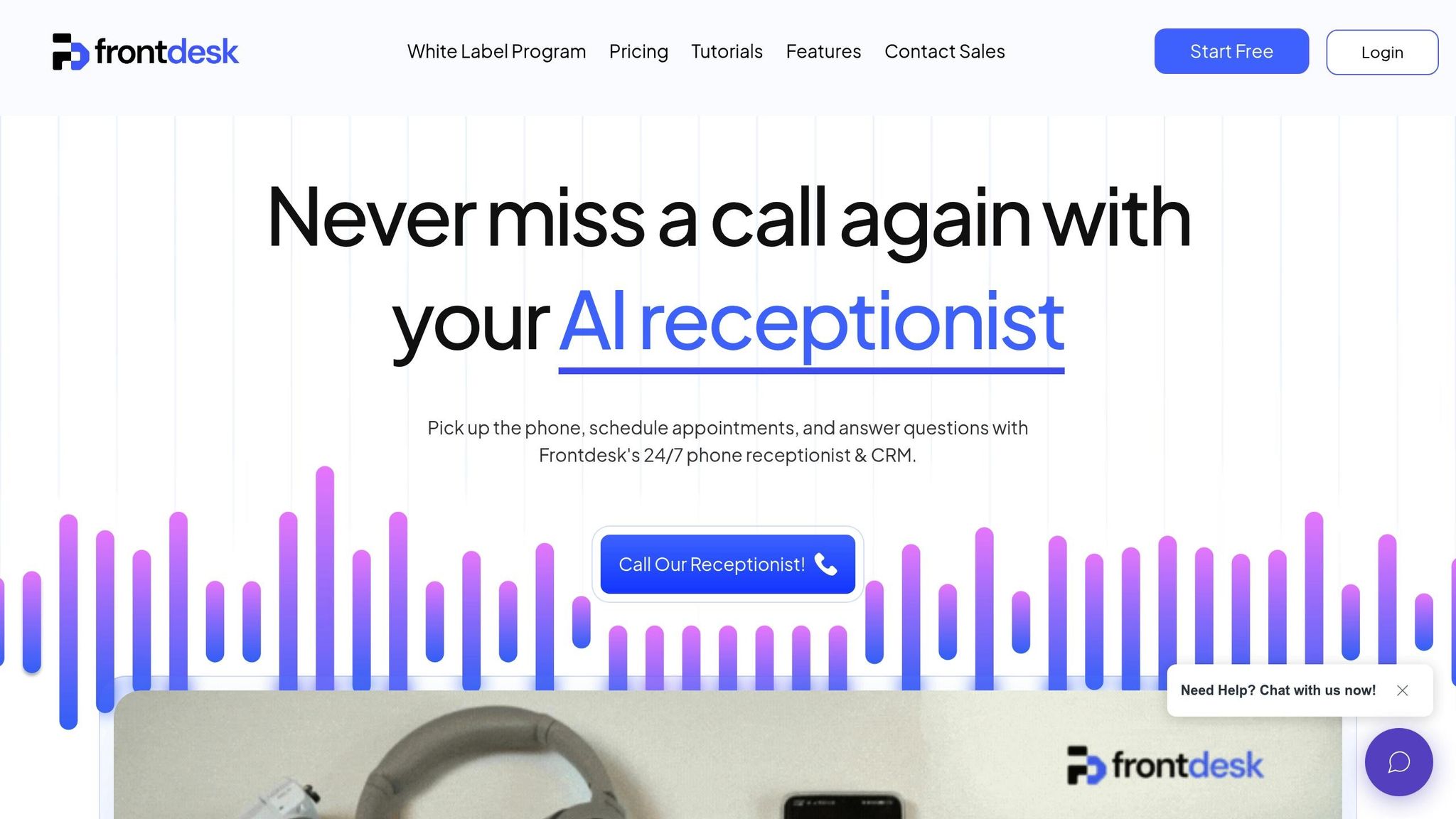
My AI Front Desk is all about voice-first support, seamlessly blending email, text, and WhatsApp messaging into one cohesive system. Designed with small businesses in mind, it acts as an AI-powered receptionist, managing inbound communications across multiple channels at the same time.
What makes it stand out is its ability to switch between channels in real time. For instance, if a customer calls, the AI can follow up with a text based on the conversation, schedule appointments via Google Calendar, and even send relevant emails. Each channel complements the other, creating a smooth and integrated customer experience.
Built on advanced AI models like GPT-4, Claude, and Grok, the platform retains context as customers move between communication methods. Whether someone starts with a phone call and continues via text or email, the AI keeps track of the conversation. With CRM integration, all interactions are organized, giving businesses a complete view of each customer’s history.
The platform is built to handle high volumes of communication. It can manage unlimited calls simultaneously while responding to texts and emails, making it perfect for businesses that deal with a lot of inbound inquiries. Email automation is also tightly integrated. After a call, the system can send personalized follow-up emails or notify team members based on the call’s content through post-call webhooks and notifications.
The Zapier integration takes things further, connecting My AI Front Desk to over 9,000 apps. This allows businesses to link the platform with tools like email marketing software and CRMs, enabling advanced automation workflows. For example, customer records can be updated automatically, or email sequences can be triggered on external platforms.
Pricing starts with a generous offering of 200+ free minutes per month, which covers around 170–250 calls - perfect for small businesses. Additional features include multi-language support, area code selection, and voice customization with over 100 premium voices from providers like ElevenLabs.
The analytics dashboard provides deep insights into customer interactions, tracking metrics like call duration and text response rates. This helps businesses understand their performance across different channels and make data-driven improvements.
While My AI Front Desk excels in handling inbound service and converting leads, it can be paired with other tools to expand into outbound marketing efforts.
In today’s world of multichannel communication, platforms vary in their focus, integration capabilities, and ability to scale. Here’s how some of the leading platforms stack up, based on their strengths and core functionalities.
Magai stands out for its content creation capabilities but doesn’t offer extensive automation workflows. It’s a solid choice for marketing teams aiming to maintain consistent messaging across email, social media, and other content channels. However, it’s not designed for customer service operations.
Mailbutler focuses on enhancing email productivity but is better suited for individual users or small teams. While it offers useful email and calendar integrations, it lacks the robust automation features required for larger-scale operations.
ActiveCampaign is a powerhouse for email, SMS, and social media automation. However, its focus is primarily on marketing automation, making it less effective for businesses that require real-time customer support.
GetResponse combines email marketing with webinar integration, making it a go-to solution for event-driven campaigns. That said, it lacks the advanced AI-driven automation found in other platforms.
Reply.io with Jason AI specializes in managing sales sequences across email, LinkedIn, and phone calls. It’s tailored for sales teams rather than customer support or broader marketing needs.
My AI Front Desk takes a different approach by integrating phone, text, email, and WhatsApp in real time. Unlike email-centric platforms, it handles multichannel conversations simultaneously. Its ability to manage unlimited calls while responding to texts and emails makes it ideal for high-volume customer support environments.
| Platform | Primary Focus | Multichannel Strength | Real-time Support | Scalability | Best For |
|---|---|---|---|---|---|
| Magai | Content Creation | Content consistency across channels | Limited | Medium | Marketing content teams |
| Mailbutler | Email Enhancement | Basic email + calendar integration | No | Low | Individual productivity |
| ActiveCampaign | Email Marketing | Advanced email + SMS automation | Limited | High | Marketing automation |
| GetResponse | Email + Events | Email campaigns + webinar integration | No | Medium | Event-driven marketing |
| Reply.io | Sales Outreach | Email + LinkedIn + phone sequences | Limited | High | Sales teams |
| My AI Front Desk | Voice Support | Phone + text + email + WhatsApp | Yes | Very High | Customer support & lead conversion |
These differences highlight how each platform aligns with specific business goals and operational priorities.
When it comes to automation, ActiveCampaign and Reply.io shine with their advanced workflow builders tailored for marketing and sales, respectively. On the other hand, My AI Front Desk offers context-aware automation that adapts to real-time conversations, providing a more dynamic and responsive experience.
Scalability is another key factor. While most email-focused platforms scale through higher-tier plans, My AI Front Desk’s architecture supports unlimited simultaneous communications from the outset. This makes it especially valuable for businesses dealing with rapid growth or seasonal surges in customer inquiries.
Cost structures also vary widely. Traditional email marketing platforms often charge based on contact lists or email volume, which can become expensive as your needs grow. My AI Front Desk, however, operates on a usage-based model, starting with 200+ free minutes each month. For businesses with high communication volumes across multiple channels, this can lead to substantial savings compared to using separate systems for email, SMS, and phone support.
Finally, integration depth sets these platforms apart. While most offer standard CRM connections, My AI Front Desk goes further with post-call webhooks and API workflows. This allows real-time data synchronization, ensuring customer interactions automatically update CRM records, trigger email sequences, and notify team members without any manual input.
Deciding between these platforms boils down to your business’s primary needs. If you’re focused on email marketing and lead nurturing, platforms like ActiveCampaign or GetResponse are strong options. But if your priority is real-time, multichannel customer support, My AI Front Desk offers a comprehensive solution that delivers immediate results across all communication channels.
Each platform shines in its own way - whether it's enhancing marketing efforts, maintaining content consistency, or streamlining sales outreach. The key is to choose one that aligns with your business's specific goals and challenges.
For businesses that rely on real-time, multichannel customer support, traditional email-only platforms often fall short. They simply can't handle simultaneous, cross-channel interactions in real time. That’s where My AI Front Desk stands out, offering the ability to manage multiple conversations at once while maintaining context across all channels.
Small businesses often prioritize quick returns and simplicity. My AI Front Desk delivers on both fronts with 200+ free minutes included, making it possible to handle 170–250 calls per month at no cost. The easy setup ensures you can start seeing results without a steep learning curve.
For enterprise organizations, scalability and integration are critical. My AI Front Desk’s usage-based model, combined with features like post-call webhooks, API workflows, and Zapier integration (connecting with over 9,000 apps), eliminates the need for costly, contact-based pricing structures.
Beyond scalability, some industries have unique demands. Service-based businesses - like dental practices or law firms - benefit from tools like real-time appointment scheduling and automated follow-ups via Google Calendar and text messaging, ensuring a smooth experience for their clients.
Meanwhile, agencies can tap into My AI Front Desk’s white-label program. With features like Stripe rebilling, control over functionalities, and embedding options, agencies can create new revenue streams without the hassle of additional development work.
My AI Front Desk brings all your communication channels - phone, text, email, and web chat - into one streamlined system. This integration allows it to keep track of the conversation's context, ensuring a natural flow without missing any critical details.
Thanks to real-time synchronization, interactions remain consistent and uninterrupted, no matter where they begin or pick up. The result? A polished, hassle-free experience for both businesses and their customers.
Using a voice-first AI support system like My AI Front Desk brings plenty of perks to small businesses. For starters, it guarantees round-the-clock availability, meaning customers can get assistance anytime - without the need for extra staff or higher costs.
The system also leverages natural language interactions, making conversations feel more personal and effortless for users, which enhances the overall experience.
On top of that, it enables multichannel communication, seamlessly connecting with customers through phone calls, text messages, emails, and more. This makes it easier to engage with people on the platforms they prefer.
By combining these features, businesses can streamline operations, boost customer satisfaction, and increase the chances of converting leads into loyal clients.
My AI Front Desk offers a pricing model that's easy on the budget and ideal for businesses managing high communication volumes. Starting at just $50 to $65 per month, you get unlimited calls - no extra charges per interaction - making it simple to scale as your business grows.
Compare that to traditional human receptionists, who often cost over $300 per month, and the savings are clear. For companies juggling a large number of calls, texts, or emails, this flat-rate approach keeps costs steady while delivering maximum value.
Start your free trial for My AI Front Desk today, it takes minutes to setup!








